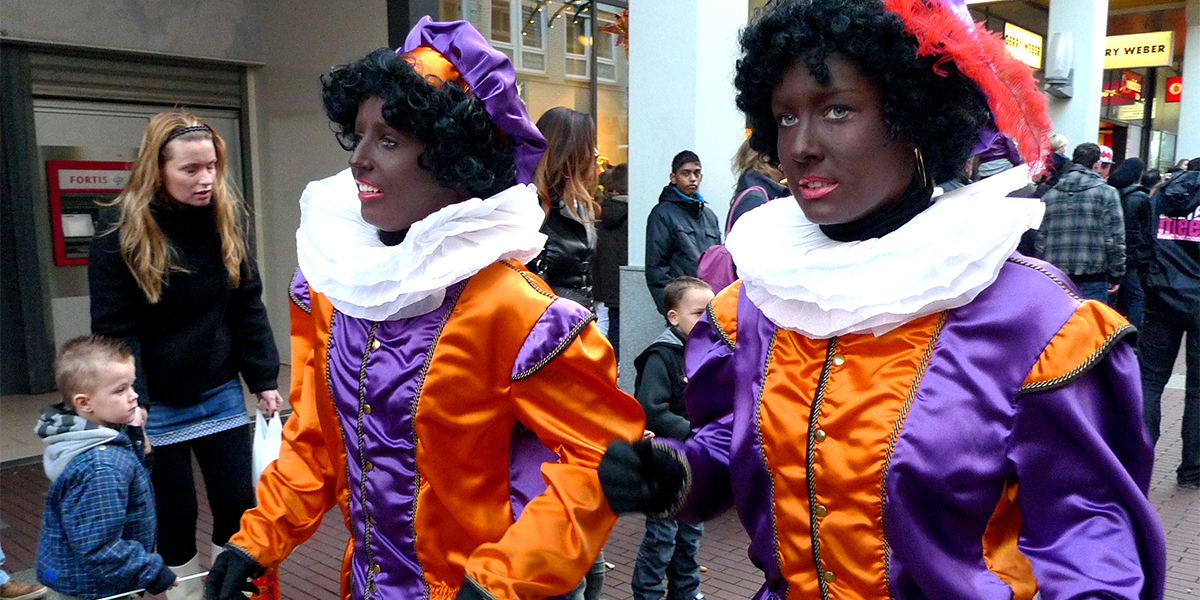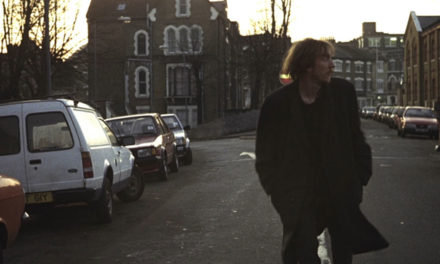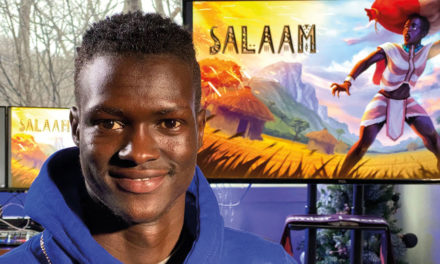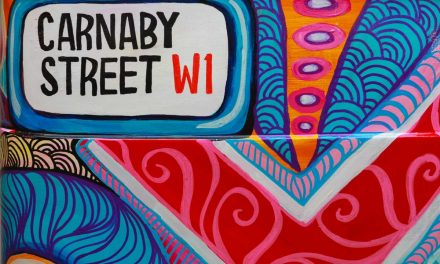Its that time of the year again. As December creeps closer, many countries have already begun putting up their Christmas trees and holiday lights. For the Netherlands and Belgium, traditional customs are a centrepiece for the celebratory period.
In Dutch folklore, Saint Nicholas – the patron saint of children – is accompanied by a character named Zwarte Piet, which translates to ‘Black Pete’. The character first made an appearance in an 1850 book by schoolteacher Jan Schenkman. Ever since, people have continued portraying the character through costumes by painting their faces black, donning a curly wig and smearing their lips red.
Unsurprisingly, the tradition has been met with widespread criticism for several years now. Many have complained about the blatant racist stereotyping and promoting an offensive representation of Black people, similar to American minstrel shows. However, many more have also argued that the tradition is a significant part of Dutch culture and isn’t racist.
In recent years, anti-Piet and pro-Piet protestors have clashed, sometimes violently. After it was announced that this year’s nationally televised parade for St Nicholas would not include Black Pete, but another variation of the character, an anti-Piet group known as Kick Out Zwarte Piet were met with extreme violence. The group was attacked during a meeting where windows were smashed, and fireworks were shot in the building.
Due to growing backlash against the character, many businesses, schools, and organisations have opted to phase out the character or change his appearance. A variation commonly used is known as ‘Sooty Piet’ which excludes the curly wig, the red lipstick while the black makeup is instead used to imitate chimney soot. Since 2011, controversy surrounding the practice has led major cities like Amsterdam and Rotterdam to completely abandon it.
Despite the changes, it seems like the Dutch are reluctant to let their tradition go – no matter how offensive. In 2015, the United Nations called upon the country to discontinue any traditions that have any racist undertones, yet the Netherlands has dismissed its concerns. Its citizens seem to feel the same way with a poll revealing that 59% of people want to keep the Black Pete tradition, while only 26% believe that it should be changed.
Blackface: A Global Issue
Unfortunately, the Netherlands isn’t the only country where blackface is an issue. From China to Peru, the practice has caused controversy across the globe. Most recently, Canadian Prime Minister Justin Trudeau faced hot water when a series of photos were published online, revealing the Prime Minister painted in black makeup during a costume party.
Halloween has become a staple time for insensitive blackface costumes – whether it’s dressing up as a celebrated rapper or donning an afro wig to pay ‘homage’ to Diana Ross. However, before blackface became associated with Halloween and other costume parties, it had a much more insidious history.
So, how did it all begin? During the 19th century, blackface started to become a popular practice in American minstrel shows. The shows, performed by white people in black makeup, would feature derogatory depictions of Black people including the happy-go-lucky slave or the dim-witted buffoon. Quickly, minstrel shows became the top form of entertainment and were subsequently exported all over the world – including Europe.
While America has acknowledged this part of its history, the Netherlands still seems to believe that the caricature has no relevance on the time it was born. During the 1850s, slavery was legal in the country, and the Dutch would frequently send slaves to work in the United States or to one of its territories.
The slave trade played a crucial part in how Black people were perceived by white people, and it makes sense that Black Pete was born during that colonial period. However, the tradition is now a harsh reminder of the country’s horrific past, from slavery to colonialism. Until the Netherlands reckons with this fact, the Black Pete symbol will continue polarising the nation and ostracising its ethnic minority community.
- This Artist is Making the Underwater Arena His Canvas - 28th April 2021
- A Video Game that Promotes Peace and Conflict Resolution - 15th March 2021
- Netflix’s ‘Living Undocumented’ is a Difficult Series to Watch, and Exactly Why We Should - 9th March 2021






